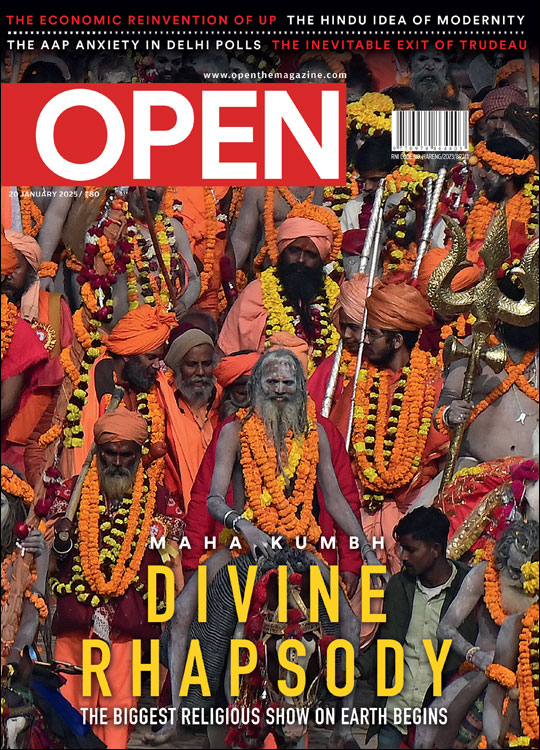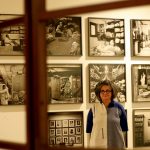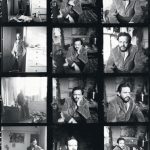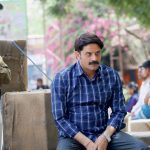BN Goswamy: ‘One feels as though he was con versing with gods’
The renowned art historian BN Goswamy in his new book brings to life the controversial 18th century artist Manaku
 Ritika Kochhar
Ritika Kochhar
 Ritika Kochhar
Ritika Kochhar
 |
27 Sep, 2017
|
27 Sep, 2017
/wp-content/uploads/2017/09/BNGoswamy1.jpg)
BN GOSWAMY IS India’s best known art historian, and our answer to Indiana Jones—or actually, Indiana Jones’ father, as played by Sean Connery in the movies. With his cravat and spectacles, he resembles a European Connery. He punctuates his conversation equally with Persian couplets and Vedic shlokas. He’s one of the last great liberal art professors in the country.
Like Jones, he has lived a dual life as a mild-mannered academician and a researcher finding and exploring old Pahari, Rajput, Mughal and Sikh paintings. He has also made a career of challenging assumptions. He chose to leave the IAS after two-and-a-half years to pursue a PhD in History. In 1958, when economic and political histories were the subjects of choice, he chose to focus on Art History. While Indian art historians (mostly foreigners) focused solely on rulers and the art they patronised, he has proved repeatedly that by the 17th century, family workshops were the embryo of painting styles and individual artists often moved from kingdom to kingdom following patrons or in search of them.
The list of his rebellions is long. When most academicians in the 1960s and 1970s chose to move abroad, Goswamy chose to stay in India, working with Mulk Raj Anand, who first visited as Tagore Professor at Panjab University in Chandigarh, and then set up a Fine Arts Department there. He has continued to live and teach in Chandigarh, and regularly teaches at universities across Europe and America. And, while most people with an eye for great art and the resources to obtain hidden treasures would have built up their own collections, Goswamy does not own any. Instead, he has built a ‘corpus’ of art historians who are ready to explore new ways of thinking.
He was in Delhi recently for the release of his 26th book Manaku of Guler (Niyogi Books; 511 pages; Rs 4,000). Manaku, an 18th-century artist, has been the subject of controversy since 1926. Academicians have claimed he doesn’t exist; is a woman; lived and painted in different parts of North India. But Goswamy, in a hugely engrossing book, has created a timeline for the artist on the basis of entries made by Manaku and his cousins while on pilgrimage to Haridwar, as well as two portrait sketches of his, separated by a few years. He has also catalogued Manaku’s works on the basis of topics. He has re-created folios ranging from the Bhagavata Purana, the Gita Govinda, the Ramayana and even the Ashwa-Shastra, a series on horse ailments. The range and quality of work, based on composition and topic, shows why Manaku was such an important 18th-century artist. It also showcases the connections that Goswamy utilised across the globe to locate so many paintings, and the research that’s gone into recreating the life of an anonymous painter. Excerpts from a conversation.
You’ve finally written a book on Manaku. Would you feel that your relationship with Nainsukh was more intimate than the one with his brother, Manaku?
Just the opposite. Manaku allows us entry into his life and thoughts. There is a sense of warmth and intimacy in whatever has survived in Manaku’s wonderful work—for example, the way he interprets the text of the Bhagvata Purana or the Gita Govind. He seems to have developed a sense of familiarity even with the gods; one feels as if he was almost conversing with them. Nainsukh, on the other hand, keeps many things to himself and allows the viewer to enter his work at his own terms. It is not a question of identifying favourites: it is just that you see the two brothers and their work differently.
You’ve written in this new book about the fact that Manaku’s patron was possibly Dinamani Raina, the Rajguru of Guler. Almost no one has mentioned this before. How do you support this discovery?
The heads of many religious organisations were patrons. My wife has translated manuscripts like Daliparanjini—a chronicle of Guler for its king, Dalip Singh, by a visiting poet, who was engaged/ patronised by Dinamani Raina, so it’s entirely possible he patronised artists as well. And he was an important figure at court. He’d have been an important part of any discussion about religion. Also Manaku belonged to the ‘Raina’ community. There’s very little doubt in my mind that he was Manaku’s patron.
What made you decide to become an art historian?
I’m not a trained art historian, I’m a historian. I did my MA in History and all that I know about the history of art I have taught myself. In those days, it was still a matter of prestige to join the IAS. Smart people became doctors and engineers and a few joined the IAS. But within two-and-a-half years, I knew it wasn’t for me. I was surrounded by wonderful officers but their interests were limited. And if you were true to your profession, it left you with no time to pursue other interests.
I’m not a trained art historian, I’m a historian. I did my MA in History and all that I know about the history of art I have taught myself
But it wasn’t just me who resigned. It so happened that five of us from the 1956 batch resigned over a period of time. When I was leaving to join the IAS, some friends had handed me a book on Kangra valley painting by MS Randhawa which I read in the train. It looked, among other things, at the religious background that was responsible for the art. When I decided to study the social background of that art for my PhD, my guide was a fine, but typically conservative Punjab University professor, who understood history from an economic and political point of view. I asked him to get the views of scholars like WG Archer, Karl Khandalavala and AL Basham who all wrote back enthusiastically approving my choice of topic. But, that was the extent of involvement from my guide. After that, if anyone asked him where Goswamy is, he’d say, ‘He must be sitting somewhere looking at pictures.’ He had no interest in art at all.
Why’d you focus on individual artists and family workshops?
I was teaching at the University of Kiel in Germany—on Mahatma Gandhi and the freedom movement incidentally, and not art. But while there, I was very impressed by the fact that in those lands, art was such a part of people’s lives. Museums were alive. Art mattered.
During that period, I happened to go to London and was in the Victoria and Albert Museum when I saw a sign on the door that read ‘W.G. Archer’. He met me effusively and even invited me to stay in his house on subsequent visits to London. One day, he said laughingly, ‘If only we knew something about those ‘wretched artists’.’ That started me thinking. When I returned to India, I set about finding more about those ‘anonymous’ artists, and tapped very unconventional sources, like pilgrimage records. I also had some linguistic skills and could read the local takri script. All of this helped and I managed to dig out a great deal of accurate, sometimes dated, information about the painter families of the hills.
What’s the wildest thing you’ve done in your research career?
The most fruitful has to be discovering, and tapping, the records of pilgrimages that panda-priests keep in their bahis. It all started in Kurukshetra where I was visiting a friend and was home all day while he went to teach at his university. One day I suddenly remembered that I had been taken by my father as a child to Haridwar, and we had recorded our visit in the bahi of a panda there. Since Kurukshetra was also a famed place of pilgrimage, I went to the pandas to see if they had any records of the names of any chateras (painters). They showed no awareness of the painters— evidently because the families had more or less died out—but one of them kindly handed me the bahis relating to Kangra to see if I could locate anything in them. For three days, I went through them with no result. But I vividly remember that, on the fourth day, I was sitting on the rush mat provided by the panda, browsing through the bahis, when I turned a leaf and there it was: a five-line entry made by the chiteras of the village of Samloti in Kangra. The sun was setting at that time, but in a different way, it shone for me.
Knowing that I was now on to something, I set up a systematic search in those records, travelling from place to place, chiefly Pehowa in Haryana and Haridwar. This went on with breaks for three years. It was not easy. Pandas are reluctant to dig into very old records. They are also are a bit suspicious about anyone wanting to look at the records pertaining to families other than their own, since these records are admissible in courts of law in succession matters and property disputes. But slowly my credibility with the pandas grew, and, bit by bit, I landed upon very detailed, very valuable information which I have ploughed into my research.
Manaku allows us entry into his life and thoughts. There is a sense of warmth and intimacy in whatever has survived in his wonderful work—for example, the way he interprets the text of the Bhagvata Purana or the Gita Govind
Which other discoveries excited you?
One keeps discovering links. A few one knows. The fact that a number of visitors to India used to take back miniatures; or the fact that great European painters had had some brush with Indian paintings: Rembrandt, for instance, who copied some Mughal paintings, or Delacroix. Even as early as the times of Charles I of England, Bishop William Laud had a set of ragamala paintings in his collection; the Empress of Austria, Maria Theresa, had a room of hers in the Schonbrun Palace ‘decorated’ with Indian miniatures.
To come to more recent times, however, there is a discovery that I made and you might find it of interest in this context. Have you seen my book on Kutch paintings? (I shake my head in the negative). Not surprising, the publishers, OUP in India decided to trash it long ago! But I am still very fond of the work. It’s called A Place Apart: Painting in Kutch, 1720-1820.
Why’ve you seldom turned your discerning eye to Contemporary Indian art?
When I founded the Department of Fine Arts, I insisted that a comprehensive reading of Contemporary art, especially Indian Contemporary art was a part of the syllabus. I offered no choice on this. Without information, understanding would be flawed. I’m very keen on this even if I’m no longer teaching.
Having spent so much time teaching Indian Art in various universities abroad, why do you think that miniature art from India has made a place for itself abroad while Contemporary art hasn’t been able to?
The world’s reception to Contemporary Indian art has been slow because it used to be repetitive, but slowly there’s a rise in appreciation. There are 15-20 names that are famous now. I think there is some extremely fine work being done now. But most of the painters haven’t seen tradition. If only they’d look at our traditional arts. If seen from the right angle, there are elements of abstraction in our classical art. Not everything catches people’s interest and gallerists and museums play a part in deciding what is of interest, but there is a growing interest in what Indian artists are doing. It’s nothing compared to the way China and its artists are being appreciated, but there is a growing appreciation and that is a healthy thing. Also, there’s a question of relevance. Everywhere, they are lamenting that when the professor of the Indian Studies department retires, the department closes. Politics also plays a part. Most museums and universities have Chairs on Chinese Art. The flag follows trade. Lots of people also collected Chinese art. So it built a momentum of its own.
But celebrities like Michael Douglas and Robert De Niro collect Indian miniature art, do they not?
Michael Douglas donated some Indian miniatures to the LA County Museum of Art many years ago—of no great value to my mind, I might add—but one does not think of him as a collector. This might also be the case with Robert De Niro. But there have been serious collectors of Indian art there: Edwin Binney, for instance who was a dedicated collector and donated the major part of his collection to the San Diego Museum of Art. Stuart Cary Welch, WG Archer, Howard Hodgkin, Cynthia Polsky, Paul Walter, Konrad Seitz, Horst Metzger, are some of the other names that come easily to mind.
I might add at the same time that most of these collections were made when the prices of Indian art were very low and objects were available in numbers. This is no longer the case. Take Nainsukh, for example. Some 20 years ago, if you were lucky and a Nainsukh was available, you could’ve bought it within a lakh of rupees, or even less. In 2007, a collector in Mumbai bought one for $2.22 million (then around Rs 10.7 crore, now Rs 14 crore).
Why did you never build a collection?
I could, very early on, see a conflict of interest. When, in the early years, I was doing extensive field work and collecting oral information, I knew that the moment the word spread that I am interested in acquiring things, the sources of information will either dry up, or I would be fed stories. My focus was essentially on getting as many facts as was possible, and get them straight.
Later in my career, I got involved in buying for museums as a member of acquisition committees. And there would have been obvious conflict of interests if I had gone about collecting for myself. The situation abroad tends to be different. One knows so many curators there who also have personal collections.
Nainsukh’s descendents are still alive and practising. Why isn’t the tradition flourishing in India, unlike Pakistan?
There are very skilled artists still producing miniatures: at Jaipur, Udaipur, Bikaner, Chamba, for instance. But much of it is imitative and when anything new or different turns up, one can see that there is no heart in it. Or shall one say, soul? In the earlier work in the tradition, there was a sense of deep conviction which very often came from religion. But today? Who believes in those stories from the Puranas? And who is painting for a specific and engaged patron?
Of a different kind is the work that many young artists from Pakistan are doing. Most often they take motifs from earlier work, set up a play with them, use them with great intelligence to turn out work that is somehow in consonance with contemporary sensibilities.
What next?
I have just begun work on a book centred on a great manuscript from Mysore. I don’t know much about the style; so I am learning and teaching myself. It will be, when it comes out, richly illustrated with over 200 paintings.
Do you have a favourite painting?
Yes, it’s a Pahari painting that’s in the Rietberg Museum Collection in Zurich. It’s from the Manaku-Nainsukh family workshop from approximately 1775 and it shows Rama, Sita and Lakshmana crossing the Ganga River after their exile. The question that the painter is asking here is: is it the Ganga or the bhava-saagara (this ocean of sorrow that is the world) that the Lord is going to take us all across at the end?

/wp-content/uploads/2025/01/Cover_Kumbh.jpg)













More Columns
The lament of a blue-suited social media platform Chindu Sreedharan
Pixxel launches India’s first private commercial satellite constellation V Shoba
What does the launch of a new political party with radical background mean for Punjab? Rahul Pandita